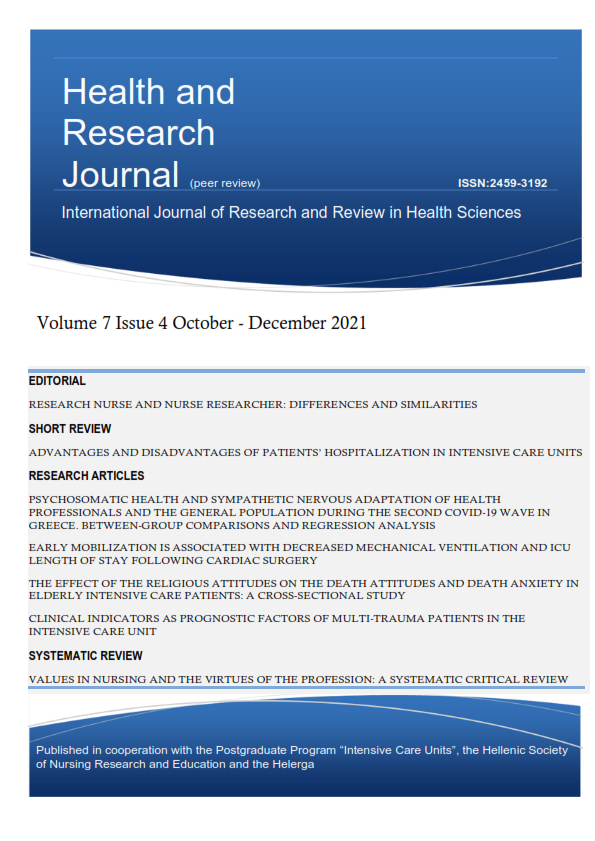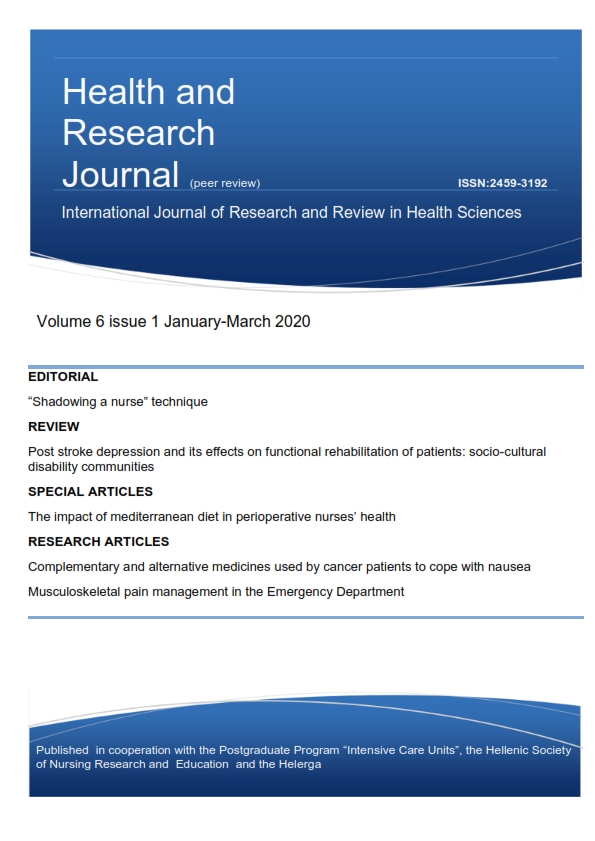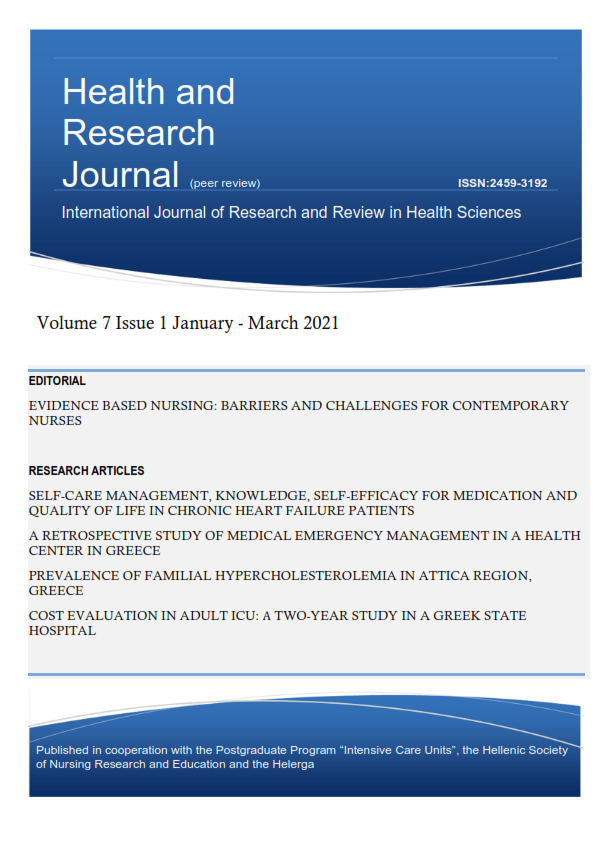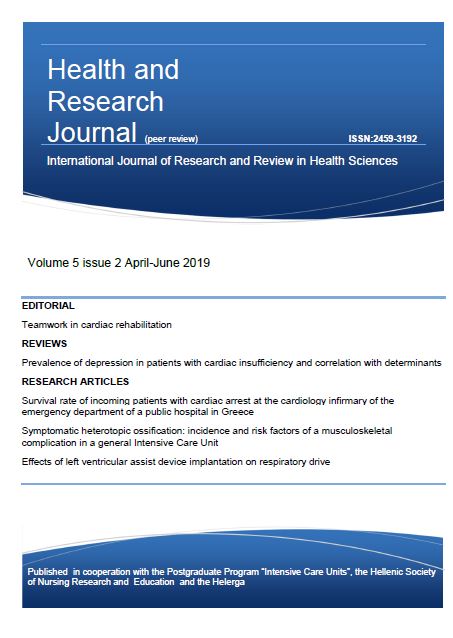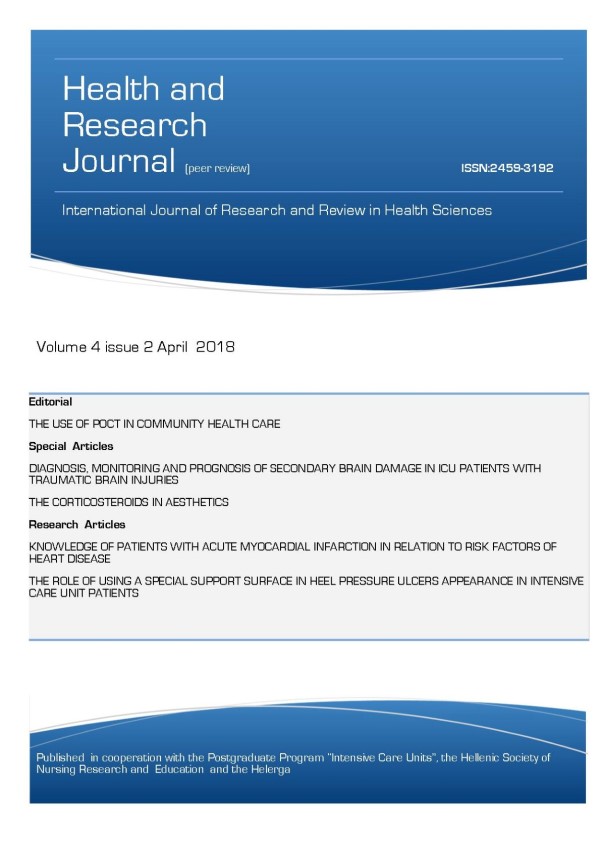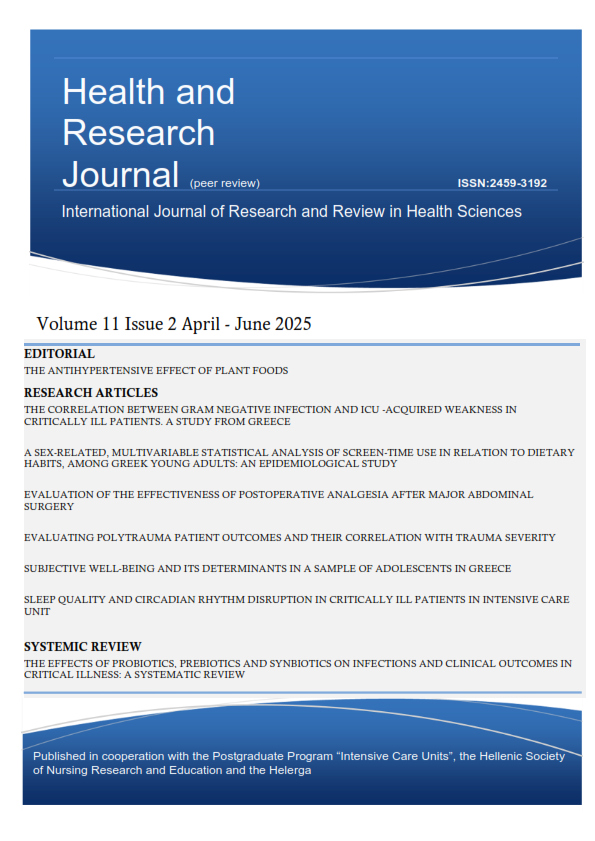Patients΄ complications during classic hemodialysis session

Abstract
Introduction: Patients with end stage renal disease, who are submitted to chronic hemodialysis (HD) therapy, exhibit a variety of complications, leading to increased possibility of interruption of the current therapy session, possible withdrawal of the future HD sessions and eventually, poor outcome for these patients’ health.
Aim: The aim of the present study was to explore complications and symptoms of patients under classical hemodialysis treatment, during the session of therapy.
Methodology: The methodology that was followed included the review of the Greek and international literature of the last ten years in the databases (Pubmed, Google Scholar, medline). Key words such as: «end stage renal disease», «HD complications», «HD symptoms», «intradialytic hypotension», were used.
Results: Despite the extensive knowledge and experience surrounding the treatment of classical hemodialysis, patients continue to experience a variety of symptoms during the hemodialysis session. The rates of many complications like hypotension, hypertension, nausea and vomiting, etc. continue to be high in many hemodialysis units in the world. Also according to the literature patients with high risk medical history, especially male patients, experience the most complications.
Conclusions: Although developed technology in combination with specialized nurses provide a better profile of HD session therapy, plenty of complications and symptoms continue to exist, worsening the quality of the HD therapy and the quality of life of the patients submitted to classical HD treatment.Article Details
- How to Cite
-
Georgiadis, G., & Kadda, O. (2017). Patients΄ complications during classic hemodialysis session. Health & Research Journal, 3(4), 163–178. https://doi.org/10.12681/healthresj.22209
- Section
- Reviews
Copyright notice:
The journal "Health and Research Journal" reserves the rights for copyright of the content of the website and also the copyright of the articles published.
By virtue of their appearance in this journal, the articles are free to be used for non-commercial purposes. However, the articles cannot and must not be used in anyway, published elsewhere or modified without any reference to the author and the first publication of the article.



